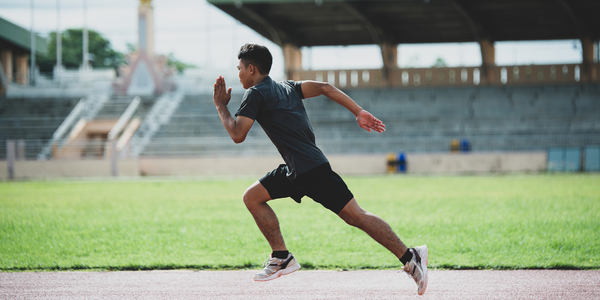Did you know that your body can work out without causing any joints or muscles to move? Even the absence of movement counts as movement. Exercises that require muscle contraction without moving the relevant muscle or its connected bone joint are referred to as static exercises or isometric exercises. If that information has left you perplexed, let us simplify it for you.
Imagine being instructed to hold a 1-liter bottle of water with your elbows bent at 90 degrees for a short period of time before being instructed to continue holding the bottle for another 10-minute period. As the time period lengthens, you may begin to experience pressure or perhaps a progressive ache. That turns into an isometric hold, which applies pressure to your muscles without shortening them (concentric contractions) or lengthening them (eccentric contractions). Although being still is a component of isometric exercise, this does not imply that sitting in an air-conditioned office cubicle or in front of the TV at home is a static exercise. The isometric exercise entails purposefully being motionless while focusing on a specific muscle or set of muscles to produce tension inside and maintain its strength.
What is Isometric Exercise
When the brain sends signals, our muscles contract to produce bodily motions. Muscle contractions can be classified as isotonic, isometric, or isokinetic. Isometric is when the muscle length remains constant, and Isotonic implies the same weight on the muscles but the length may change. For instance, doing squats is an isotonic exercise, while holding the squat in one position, is considered an isometric exercise. In Isokinetic movement, the muscle length may change but the speed or force of movement remains constant, like while cycling on a stationary bike in a gym.
An isometric contraction is a static contraction where the muscles push against an immovable object or the force generated by the opposing muscle. This means the muscle or muscle group is under contraction but does not change its length, and neither do the joints involved move. Most of these isometric exercises do not require any external equipment and can blend easily into your workout regime, and can be used by all age groups to tone up and increase one’s fitness levels. These exercises may not help with dynamic actions like moving quickly or in sports for athletes, but they help strengthen the muscles at the angle at which they are trained.
Types of Isometric Exercises
Isometric exercises involve 2 different modes of performance:
- To hold something isometrically- Resistance against an impacting force
- To push something isometrically- Resistance against a stable force
This resistance can be applied mechanically or manually. A few common Isometric Exercises include
- Plank
- Squat Hold
- Wall Sit
- Side Plank
- Tree Pose
- Warrior Two
- Non-Push-up Push up
- Hip Lifts
- Static Lunge
- Push That Wall
- Medicine Ball squeeze
Benefits of Isometric Exercise
Isometric exercise has several health advantages that include:

-
Rehabilitation from injury
As there are no joint movements involved and the intensity of muscle contraction can be carefully observed, your physiotherapist may advise isometric exercises during the early stages of your recovery after an injury. Muscular injury interferes with normal muscular function, weakening it. Long periods of inactivity can cause muscles to atrophy, or shrink in size. Once the pain has subsided, even if the injured or immobilized area is in a cast or splint, it is possible to perform isometric exercises without moving the affected joint. Rehabilitation with isometric exercises thus increases the static strength of the muscles and reduces the risk of atrophy. Taking a collagen supplement along with exercise may further improve muscular and joint health.
-
Provides pain relief
Isometric exercises may be used at the beginning of treatment for managing and reducing tendon pain in tendinopathy. In fact, isometric exercise may help provide immediate and sustained pain relief for extremely painful tendons. Isometric exercises exhibit an analgesic effect by causing changes in the cortex of the brain, which impact intracortical inhibition( a neurological response), which is associated with pain reduction.
-
Improves cardiovascular health
Isometric exercises may help your heart stay healthy by lowering blood pressure. One possible mechanism by which it brings about this effect is called endothelium-induced vasodilation. Isometric exercise increases blood circulation, which causes our endothelium (the internal lining of the arteries) to release Nitric oxide, which is a vasodilator (which brings about the widening of blood vessels). Thus, people with hypertension can benefit from Isometric exercises.
-
Increases muscle strength
Isometric exercises help your muscles grow in strength by increasing blood flow to them. The pressure inside the muscles increases the flow of blood, which in turn triggers the synthesis of the muscle-building proteins, actin and myosin. Thus, Isometric exercise helps in building strength and muscle. If your intention is to grow muscle mass at a greater rate, you may include a protein supplement in your diet regimen. And if you are a vegan, you may opt for organic plant protein or vegan plant protein. Adding protein supplements may help you speed up the process of building muscle.
-
Weight loss
Isometric exercises help build muscle, while the increase in muscle mass promotes fat loss. Along with restoring muscle tissue, muscle contractions in isometric exercise also put the muscles under metabolic stress to produce energy and thereby aid in losing fat. Thus, isometric training is used as a part of the weight loss program. If you are planning to lose weight, however, simply doing Isometric exercises may not help much. Make sure you balance it out with a healthy, low-calorie diet. You may additionally have weight loss supplements like weight loss tablets or capsules, apple cider vinegar (ACV), or protein powder for weight loss. Benefits of ACV apart from weight loss include improved digestion, enhanced immunity, blood sugar control, and better cardiovascular health. Some of the weight loss supplements may also come in oral strips with different flavors like coffee melts. Such weight loss supplements in the form of thin oral strips are loaded with nutrients and boost metabolism, along with giving you coffee benefits.
Who can perform Isometric Exercises?
Isometric training can help you reach your fitness objectives, regardless of whether you want to reduce weight, heal from an injury, or enhance your general fitness. Isometric exercise can be done by anybody, from young children to older adults, due to its simplicity of use and affordability. This exercise is especially beneficial for those who have had injuries or have problems moving their joints due to conditions like arthritis because it does not require joint movement. It might instead boost physical fitness, lessen discomfort, and increase strength. However, be careful to first obtain your doctor's approval.
Wrapping up
With the help of static workouts called isometrics, your muscles can get stronger without having to move around much. It has numerous advantages, such as strengthening muscles, reducing discomfort, weight loss, and heart protection. Although everyone can conduct isometric exercises safely, it is always advised to do so under the guidance of your doctor, especially if you have any health conditions or mobility problems.
References
https://www.sciencedirect.com/science/article/abs/pii/B9780128123485000088
https://systematicreviewsjournal.biomedcentral.com/articles/10.1186/s13643-022-01974-9
https://systematicreviewsjournal.biomedcentral.com/articles/10.1186/s13643-022-01974-9
https://www.nature.com/articles/hr2015111
https://pubmed.ncbi.nlm.nih.gov/30943568/
https://www.sciencedirect.com/topics/nursing-and-health-professions/isometric-exercise
https://www.sciencedirect.com/topics/nursing-and-health-professions/isometric-exercise
https://www.mayoclinic.org/healthy-lifestyle/fitness/expert-answers/isometric-exercises/faq-20058186






























